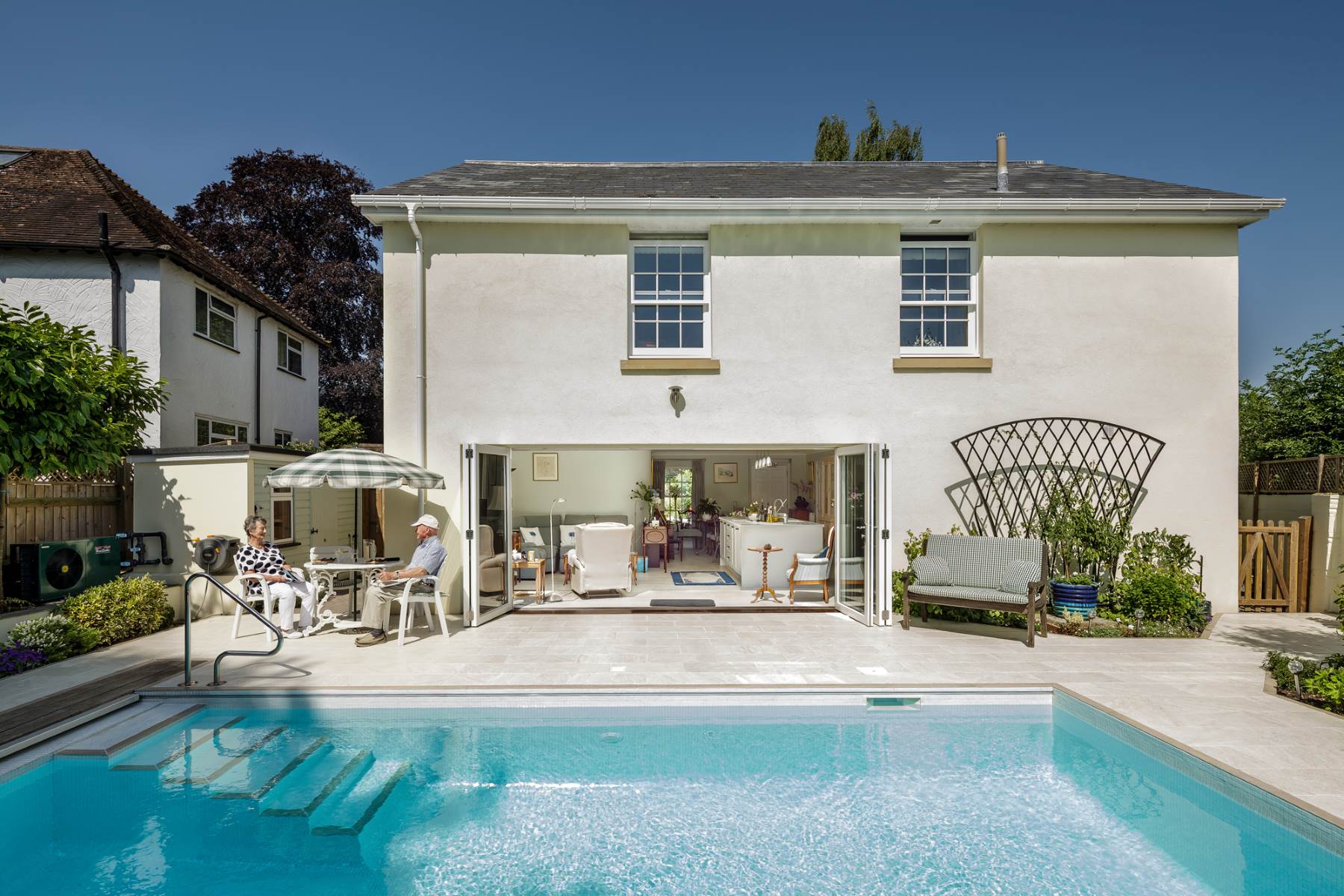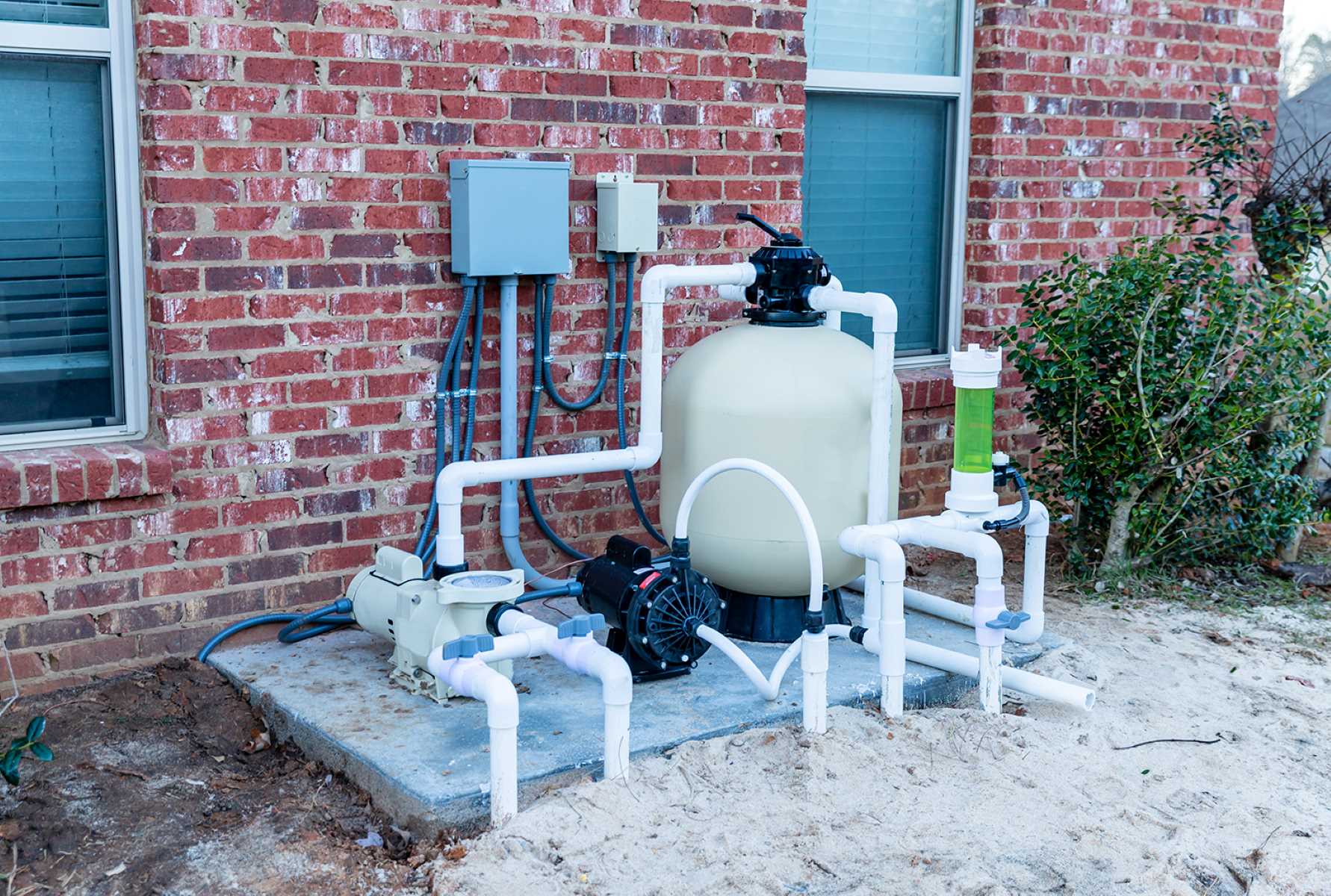Home>Gardening & Outdoor>Outdoor Recreation & Activities>How Does Refraction Change The Apparent Depth Of A Swimming Pool


Outdoor Recreation & Activities
How Does Refraction Change The Apparent Depth Of A Swimming Pool
Modified: February 19, 2024
Discover how refraction affects the perceived depth of swimming pools. Explore the science behind outdoor recreation and activities.
(Many of the links in this article redirect to a specific reviewed product. Your purchase of these products through affiliate links helps to generate commission for Storables.com, at no extra cost. Learn more)
Introduction
The phenomenon of refraction, though often unnoticed, plays a fascinating role in altering our perception of the world around us. In the context of a swimming pool, refraction can create an intriguing optical illusion that affects the apparent depth of the water. Understanding how refraction influences the apparent depth of a swimming pool can provide valuable insights into the principles of optics and the behavior of light.
Refraction occurs when light travels from one medium to another, causing it to change direction. This change in direction is a result of the variation in the speed of light as it moves through different substances. When light passes from air into water, it slows down, causing it to bend or refract. This bending of light is what leads to the fascinating visual effects that alter our perception of the depth of a swimming pool.
By delving into the concept of refraction and its impact on the apparent depth of a swimming pool, we can unravel the intriguing interplay between physics and our visual perception. This exploration will shed light on the factors that influence the apparent depth of the water, offering a deeper understanding of the captivating optical illusions that can be observed in everyday settings.
Key Takeaways:
- Refraction in a swimming pool makes it look shallower than it really is, creating a cool optical illusion. Factors like the angle of light and water transparency affect this visual trick.
- When light bends as it moves from water to air, it makes the pool seem shallower. This happens in natural lakes, public pools, and even in underwater photos and videos!
Read more: How To Change Swimming Pool Light
Understanding Refraction
Refraction is a captivating optical phenomenon that occurs when light transitions from one medium to another, such as from air to water or from water to glass. This transition causes the light to change direction, resulting in the bending of light rays. The alteration in the speed of light as it moves through different mediums is the fundamental cause of refraction. When light travels from a less dense medium, such as air, to a denser medium, such as water, it slows down and changes direction.
The degree of bending that occurs during refraction is determined by the change in speed as light passes through the different mediums. This change in speed is a result of the varying optical densities of the substances through which the light is traveling. The greater the difference in optical density between the two mediums, the more pronounced the bending of light will be.
The bending of light during refraction is governed by Snell's Law, which quantitatively describes how the angle of light changes as it passes from one medium to another. This law provides a mathematical relationship between the angles of incidence and refraction, offering a precise understanding of the behavior of light as it undergoes refraction.
In the context of a swimming pool, refraction plays a significant role in altering our perception of the pool's depth. When we look at a swimming pool, our vision is affected by the refraction of light as it passes from the water into the air and then into our eyes. This bending of light creates an optical illusion that makes the pool appear shallower than it actually is. The apparent position of objects below the water's surface is shifted, leading to the visual impression that the pool is not as deep as it truly is.
Understanding the principles of refraction provides valuable insights into the behavior of light and the fascinating ways in which it interacts with different mediums. By comprehending the mechanisms behind refraction, we can gain a deeper appreciation for the optical illusions that enrich our everyday experiences, such as the intriguing alteration of a swimming pool's apparent depth.
The Apparent Depth of a Swimming Pool
When we gaze into a swimming pool, our perception of its depth is influenced by the captivating phenomenon of refraction. The apparent depth of the pool, as observed from above the water's surface, is not a true representation of its actual depth. This intriguing optical illusion is a result of the bending of light as it transitions from the water into the air and then into our eyes.
The apparent depth of a swimming pool is a visual effect created by the refraction of light. As light rays travel from the water into the air, they undergo a change in direction due to the variation in the speed of light between these two mediums. This alteration in the path of light causes the position of objects below the water's surface to appear shifted when viewed from above. Consequently, the bottom of the pool seems to be located at a shallower depth than it actually is.
The degree of apparent depth alteration is influenced by the angle at which light rays enter and exit the water. When light enters the water at an angle, it bends, and as it exits the water into the air, it bends again. This dual bending of light contributes to the displacement of the apparent position of objects beneath the water's surface, creating the illusion of reduced depth.
Moreover, the refractive index of water, which is a measure of how much light is bent as it passes through the water, also plays a crucial role in shaping the apparent depth of the swimming pool. The higher the refractive index, the more pronounced the bending of light and the greater the alteration in apparent depth.
Understanding the concept of apparent depth in the context of a swimming pool provides a fascinating glimpse into the intricate interplay between light, optics, and visual perception. By recognizing the role of refraction in shaping our perception of the pool's depth, we gain a deeper appreciation for the captivating optical illusions that enrich our experiences in aquatic environments.
In essence, the apparent depth of a swimming pool is a mesmerizing example of how refraction can create compelling visual effects, offering a captivating blend of science and visual perception that enhances our interaction with the world around us.
Factors Affecting Apparent Depth
Several factors contribute to the alteration of the apparent depth of a swimming pool due to refraction. Understanding these factors provides valuable insights into the complex interplay between light, optics, and the visual perception of depth.
1. Angle of Incidence:
The angle at which light enters the water significantly influences the degree of apparent depth alteration. When light rays enter the water at a steep angle, they undergo more pronounced bending as they transition into the air. This results in a greater displacement of the apparent position of objects beneath the water's surface, creating a more substantial illusion of reduced depth. Conversely, when light enters the water at a shallow angle, the degree of bending and apparent depth alteration is less pronounced.
Read more: How Often To Change Swimming Pool Water
2. Refractive Index of Water:
The refractive index of water, which measures the extent to which light is bent as it passes through the water, is a crucial factor affecting the apparent depth of a swimming pool. A higher refractive index leads to more significant bending of light, resulting in a greater alteration of apparent depth. Therefore, variations in the composition and temperature of the water can impact its refractive index, consequently influencing the degree of apparent depth alteration experienced by an observer.
3. Viewing Angle:
The angle from which an observer views the swimming pool also plays a role in shaping the apparent depth. When viewed from a position that allows for a direct line of sight into the water, the apparent depth alteration is more noticeable. However, when the viewing angle is oblique or perpendicular to the water's surface, the degree of apparent depth alteration may be less pronounced, as the bending of light is influenced by the angle of observation.
4. Transparency of Water:
The transparency of the water affects the extent to which objects below the surface are visible, thereby influencing the apparent depth. Clear, transparent water allows for better visibility of submerged objects, contributing to a more accurate perception of the pool's actual depth. In contrast, water with lower transparency may obscure objects, leading to a less precise assessment of the pool's depth and potentially amplifying the impact of refraction on apparent depth alteration.
By considering these factors, we gain a deeper understanding of the intricate mechanisms that govern the alteration of apparent depth in a swimming pool due to refraction. The interplay of these elements highlights the captivating complexity of optical phenomena and their profound influence on our visual perception of the world around us.
Real-life Examples
In everyday settings, the impact of refraction on the apparent depth of swimming pools can be observed in various real-life examples, offering captivating demonstrations of the fascinating optical illusions created by this phenomenon.
Read more: How Does A Swimming Pool Pump Work
1. Residential Swimming Pools
In residential environments, swimming pools often serve as prime examples of how refraction can alter the apparent depth of the water. When individuals look into a pool from the edge or from a vantage point above the water's surface, they may notice that the pool appears shallower than its actual depth. This visual effect, attributed to the bending of light as it transitions from the water into the air and then into the observer's eyes, showcases the intriguing interplay between refraction and visual perception.
2. Public Aquatic Facilities
Public swimming pools and aquatic facilities also provide compelling real-life examples of the impact of refraction on apparent depth. Observers positioned at different angles around the pool may notice variations in the perceived depth of the water, highlighting the dynamic nature of refraction's influence. As individuals move around the pool and observe it from different vantage points, they can witness firsthand how the apparent depth of the water is subject to alteration, offering an engaging illustration of the captivating optical illusions created by refraction.
3. Natural Bodies of Water
Beyond man-made swimming pools, natural bodies of water, such as lakes and ponds, also exhibit the effects of refraction on apparent depth. When individuals peer into a clear, tranquil lake, they may notice that objects below the water's surface appear shifted in position, creating an illusion of reduced depth. This mesmerizing phenomenon, driven by the bending of light as it interacts with the water, showcases the pervasive nature of refraction and its ability to shape our visual perception in diverse aquatic environments.
4. Underwater Photography and Videography
In the realm of underwater photography and videography, the impact of refraction on apparent depth becomes particularly evident. As photographers and videographers capture images and footage within swimming pools or natural bodies of water, they may strategically leverage the visual effects of refraction to create compelling compositions. By skillfully incorporating the altered apparent depth into their visual narratives, these creative professionals harness the captivating illusions generated by refraction, offering immersive portrayals of aquatic environments that captivate viewers and highlight the dynamic interplay between light, optics, and visual perception.
These real-life examples vividly demonstrate the pervasive influence of refraction on the apparent depth of swimming pools and natural bodies of water, showcasing the captivating optical illusions that enrich our everyday experiences in aquatic settings. Through these compelling demonstrations, the profound impact of refraction on visual perception is brought to life, offering engaging insights into the captivating interplay between light and optics in the world around us.
Read more: How Does A Swimming Pool Filter Work
Conclusion
In conclusion, the captivating interplay between refraction and the apparent depth of a swimming pool offers a mesmerizing glimpse into the profound influence of optical phenomena on our visual perception. By unraveling the intricate mechanisms that govern the alteration of apparent depth, we gain a deeper appreciation for the dynamic nature of light, the complexities of optics, and the captivating optical illusions that enrich our experiences in aquatic environments.
The phenomenon of refraction, driven by the change in the speed of light as it transitions between different mediums, creates compelling visual effects that alter our perception of the depth of a swimming pool. The bending of light as it passes from the water into the air and then into our eyes leads to the creation of an optical illusion, making the pool appear shallower than its true depth. This captivating alteration of apparent depth showcases the captivating complexity of refraction and its profound impact on our visual interpretation of the world around us.
Moreover, the factors influencing the alteration of apparent depth, including the angle of incidence, the refractive index of water, viewing angles, and the transparency of water, highlight the multifaceted nature of refraction's influence. These elements contribute to the dynamic and nuanced visual effects observed in swimming pools, offering a rich tapestry of optical phenomena that captivate and intrigue observers.
Real-life examples further underscore the pervasive influence of refraction on the apparent depth of swimming pools, natural bodies of water, and underwater visual media. From residential pools to public aquatic facilities and natural lakes, the captivating illusions created by refraction enrich our experiences and provide compelling demonstrations of the profound impact of optical phenomena on our visual perception.
By delving into the captivating world of refraction and its influence on the apparent depth of swimming pools, we gain a deeper understanding of the intricate interplay between light, optics, and visual perception. This exploration offers a fascinating blend of science and visual phenomena, providing valuable insights into the captivating ways in which our perception of the world is shaped by the dynamic behavior of light.
In essence, the alteration of apparent depth in a swimming pool due to refraction serves as a captivating testament to the captivating complexities of optics and the profound influence of light on our visual interpretation of the world. By embracing the enchanting interplay between refraction and visual perception, we embark on a journey of discovery that unveils the captivating intricacies of the optical phenomena that enrich our everyday experiences.
Frequently Asked Questions about How Does Refraction Change The Apparent Depth Of A Swimming Pool
Was this page helpful?
At Storables.com, we guarantee accurate and reliable information. Our content, validated by Expert Board Contributors, is crafted following stringent Editorial Policies. We're committed to providing you with well-researched, expert-backed insights for all your informational needs.













0 thoughts on “How Does Refraction Change The Apparent Depth Of A Swimming Pool”